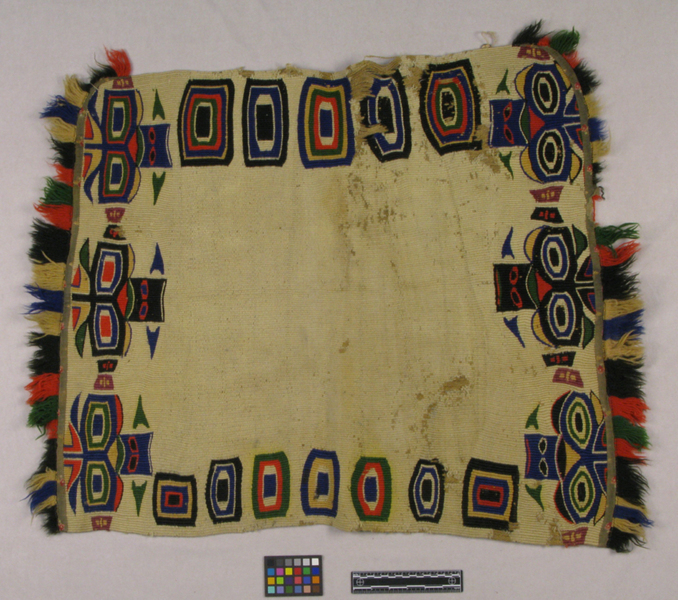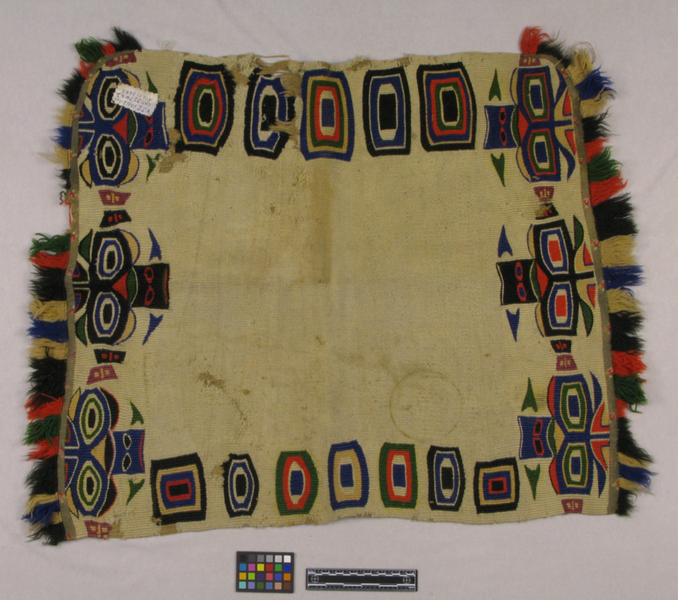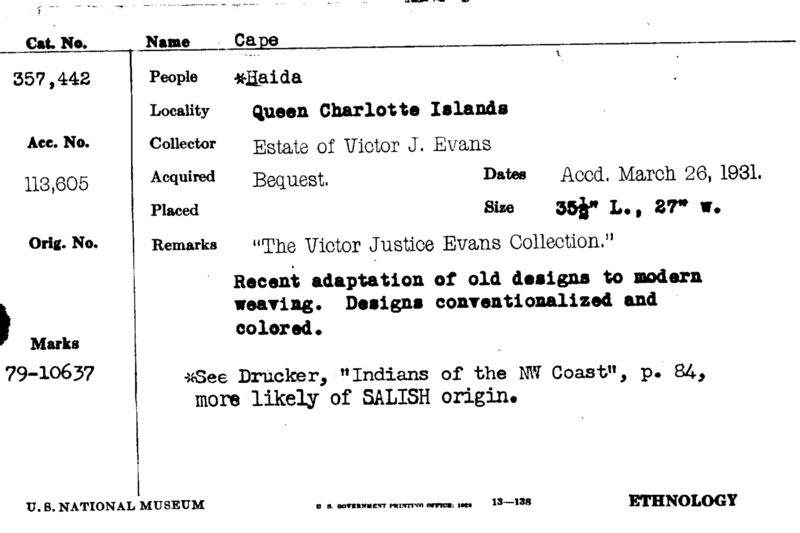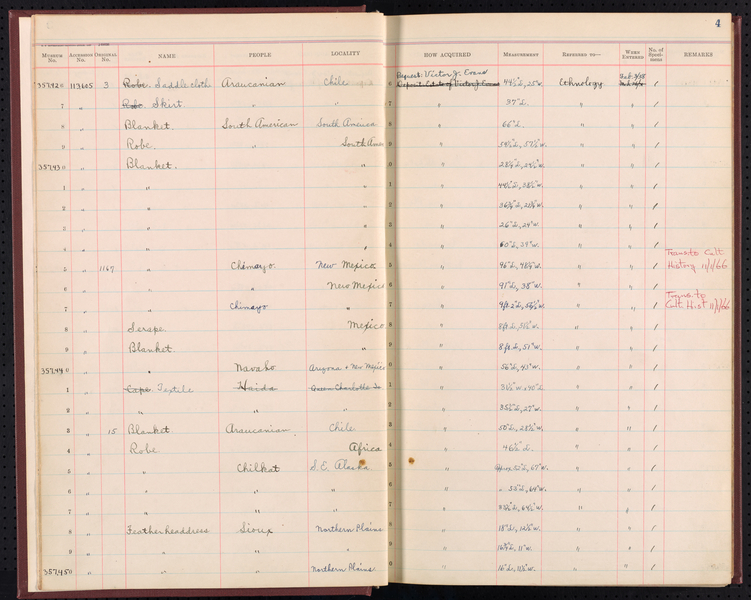Cape Item Number: E357442-0 from the National Museum of Natural History




Notes
From card: "Recent adaptation of old designs to modern weaving. Designs conventionalized and colored. See Drucker, "Indians of the NW Coast", p. 84, more likely of Salish (rather than Haida) origin." Described on p. 125, cat. entry 90, of Salish Weaving by Paula Gustafson, Univ. of Washington Press, 1980 as: "Fibres: Warp is vegetable fibre; weft is commercial knitting yarn. Colour: Red, yellow, black, green and white. Weave: Twine. History: Blanket. Provenance and collector not known. May be Bella Coola."Karen Anderson (Nuxalk elder), Ian Reid (Heiltsuk), Clyde Tallio (Nuxalk), and Jennifer Kramer (anthropologist) of the delegation from Bella Bella, Bella Coola and Rivers Inlet communities of British Columbia made the following comments during the Recovering Voices Community Research Visit May 20th - 24th, 2013. This object could possibly be a child's cape, used for the salmon ceremony or used as a modern day welcome mat. The border of the cape tells one where you come from, your rank, and where you fit into society. These crescent shapes are frequently associated with Salish, but Bella Coola is know for being a mixture of Northern and Southern styles.
Item History
- Made in British Columbia, Canada
- Collected in British Columbia, Canada
- Received from Victor J. Evans on March 20, 1931
What
- Name
- Cape
- Identification Number
- E357442-0
- Type of Item
- cape
Who
- Culture
- Haida ?, Salish ? or Bella Coola (Nuxalk) ?
- Received from
- Victor J. Evans
Where
- Holding Institution
- National Museum of Natural History
- Made in
- British Columbia, Canada
- Collected in
- British Columbia, Canada
When
- Acquisition Date
- on March 20, 1931
Other
- Accession Number
- 113605